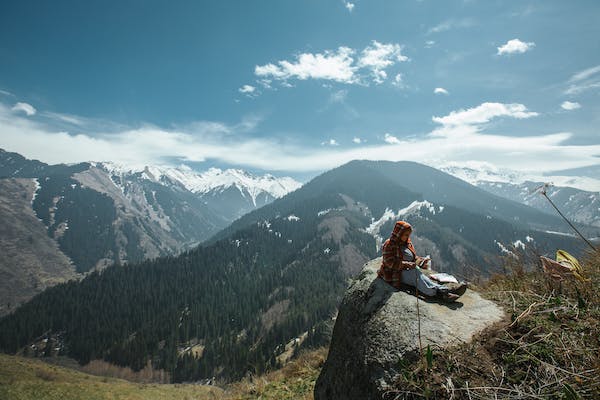Lava Domes are circular protrusions that are derived from slow extrusions of viscous lava coming from a volcano. It is quite like a steep-sided mound. Reputed to have the most massive lava dome on Earth Is the Lassen Peak. It is the only Cascade Volcano that rises above 10,000 feet but is not categorized as a stratovolcano. This volcano is also known as Mount Lassen, an active volcano in the Cascade Range of the Western United States.
This magnificent volcano is included in the 106,372 acres of the Lassen Volcanic National Park. Four types of volcano can be found in the park, namely the cinder cone, plug dome, shield, and composite. It is located in the Lassen, Plumas, Shasta, and Tehama counties in California, United States of America. Also within its territory are several lakes, hiking trails, valleys, and wildlife.
HISTORY OF THE PARK
In 1907, two separate parks, the Lassen Peak National Monument and Cinder Cone National Monument, were created because of the designation by former President Theodore Roosevelt. In 1916, they were joined together to be what we call today the Lassen Volcanic National Park.
Why the park and peaks are named so? They got their name from Peter Lassen. He was one of the first white settlers who lived in the Northern Sacramento Valley and discovered the Lassen Trail, a route through the mountains.
One of its most remembered eruptions is the explosion of the mountaintop on May 19, 1915. More than 150 eruptions have been recorded from 1914 to 1915. Steam, Ash, and Tephra continuously erupted until June of 1917. The Lassen Peak has kept a low profile since 1921 but is still considered an active volcano. Its explosion was the most recent eruption in the lower 48 states.
TOP ATTRACTIONS OF THE PARK
In the northwest corner of the park, Manzanita Lake gives its visitors an astonishing and breathtaking view while providing easy access to cabins and day activities like kayaking, swimming, and fishing. The Loomis Museum nearby holds what anyone needs so to learn more about the park.
The old volcano Mt. Tehama, or commonly called the Brokeoff Volcano, used to tower at 11,500 feet. Its remnants can still be marveled upon by travelers by passing through the Southwest Entrance. Two of the park’s highly frequented steam vents and boiling bud, Bumpass Hell and Sulphur Works, are found nearby.
Cinder Cone, the youngest volcano of the park, formed only 350 years ago during the 1660s. It can be viewed while simultaneously marveling at the majestic Butte Lake, which was once its national monument.
The Warner Valley, with its lush meadows, is located in the South-Central area of the park, and the Boiling Springs Lake and the Devil’s Kitchen are nearby. The Drakesbad Guest Ranch offers travelers exciting outdoor recreation activities in a timeless setting. Their overnight guests are accommodated in the Ranch’s rustic-themed lodge, bungalows, and cabins.
The park’s largest lake is the Juniper Lake. Its serene waters are a sight, perfect for kayaking and swimming. Mount Harkness nearby is an old fire lookout that gives visitors a captivating panoramic view of the park and its peaceful ambiance.
WINTER AND SUMMER ACTIVITIES IN THE PARK
Summer and Fall are the best seasons for when to visit the park. Although snow can make travel through the main road, a troublesome chore, it all becomes worth it as thrilling activities like snowshoe hikes, sledding, snow play, and cross-country-skiing are offered.
During the winter, snow-sports beginners don’t have to fear about missing out in this park. The park’s beauty as it is blanketed in snow is a charm and a motivation for novices. Lessons and ranger-led activities are possible.
If tourists wish to have access to all the facilities and services, though, it is during the Summer Season that they can enjoy all trails, campsites, and attractions. There are Summer ranger-led programs, field seminars, and special events. For nature-lovers, wildflowers bloom from May to September. The vibrant and bright colors of these flowers spotted along with the fields, also give many of the park’s lakes a colorful touch.
Ups and Downs are what make life as it is. The park is no stranger to this, figuratively and literally. Its lowest elevation is at the Hot Springs Creek. It deepens up to 5,275 feet. The highest elevation is 10,457 feet and is found on the Lassen Peak.
Sometimes visitors observe hues of red on top of the snow in the national park and claim it to be “Pink Snow.” This is a living organism, snow algae, or the Cryophilic algae. Cryophilic means “ice loving,” The carotenoid pigment of the algal cells is responsible for the pinking-reddish coloration.
The park is filled with wonders, and all this can be discovered by visiting the park itself. Who knows what elevations one can reach and what fascinating phenomena can be found!

